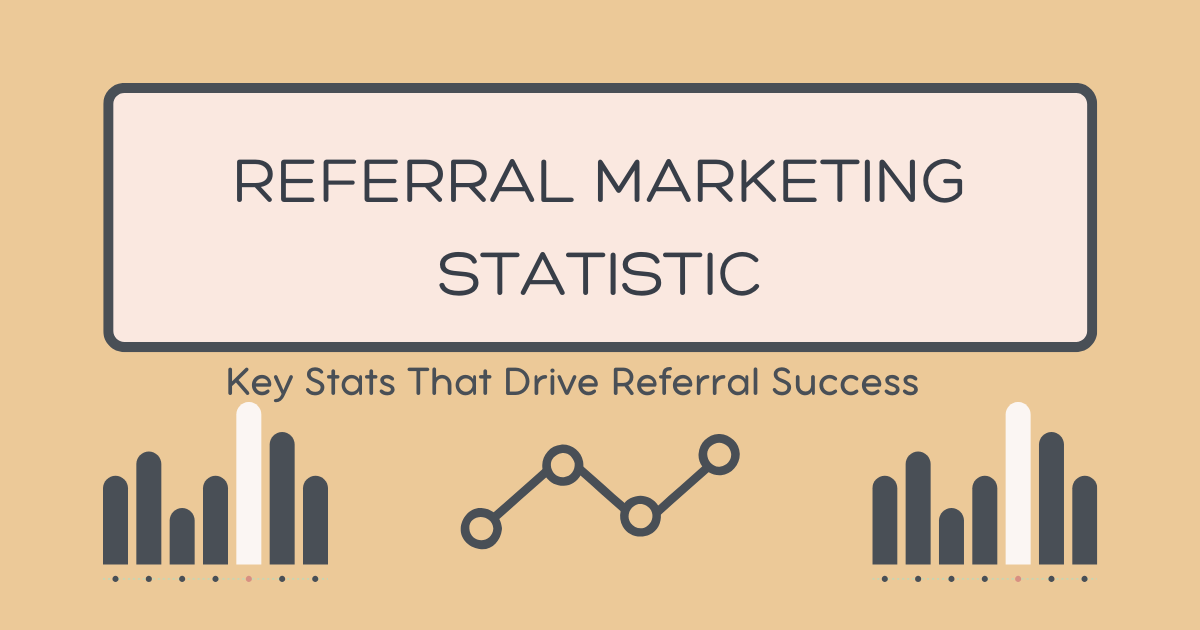Referral marketing is more than a buzzword for building trust, increasing customer retention, and driving revenue. In fact, referral marketing statistics are more than just impressive – they are a gold mine of actionable insights for marketers hoping to refine their referral programs.
Continue reading to discover top referral statistics on customer acquisition and retention, ROI, and assimilate how to leverage them to strengthen your numbers. Whether you have embraced referral marketing just now or have been using this strategy for some time, these numbers will make clear why they are so crucial to success.
What is Referral Marketing?
Referral marketing, also referred to as word-of-mouth marketing, is based on clients referring your product or service to their loved ones, friends, and colleagues. The most vital reason it is so effective is trust. A client referred by a loved one is more likely to trust your brand. Which is precisely why all these statistics beam with their significance anything.
Why Are These Numbers So Important?
The facts speak for themselves: a direct referral attracts not only clients but highly loyal, high-value clients. The referrals in this blog post discuss its significance in all areas of your referral strategy: from drawing attention to your business to incentivizing customers and measuring your ROI. Here is a complete run through of how, where, and why referral marketing is above all by the numbers.
Customer Acquisition
No developing business can survive without attracting new customers. No other strategy outperforms direct referrals in terms of how many of them.
Consumers also widely reveal that 82% of them are influenced by referrals from friends and family in making purchase decisions. Referred customers are also four times more likely to make a purchase than the leads acquired through paid advertising.
Companies with a referral program have been recorded as experiencing 86% more revenue growth over two years than companies without a program. This is because of the high conversion rate that referrals have been proven to have. While people may pay little attention to the digital and print ads being displayed, they are more likely to respond to the encouragement of someone they know. People already consider friends and acquaintances’ opinions valid; hence the chances of starting a journey with your product are very high. For a business owner, this is the best way to acquire new customers because they come in already trusting you.
Customer Retention
Once customers are acquired, the challenge becomes retaining them. Businesses that have implemented a referral program have attracted more customers than those without such programs.
Referred customers have a 37% higher retention rate than non-referred customers. The perennial benefits for the customer come from the emotional investment that the referees have in the brand. Lastly, investing in an excellent referral program can also protect the business’ relationships well.
Return on Investment
Any business person’s ultimate question is whether the strategy will bring a return on investment.
Referral programs have been said to generate a high return on investment. For every dollar spent, the return on investment is three times higher than that for the amount used on traditional advertising.
Finally, a referred customer acquires 16% more lifetime value than other customers. Businesses who run referral programs see an 18% lower customer acquisition cost than those that rely on more traditional marketing methods.
These numbers illustrate the scalability of referral marketing. Instead of paying for ads or promotions whenever you want to attract new customers, referrals naturally create advocates for your brand from their satisfied and engaging clients. At the same time, this reduces long-term costs and increases the lifetime value of those acquired customers.
Practical Insights to Enhance Your Referral Strategies
-
Provide Excellent Customer Service
Ensure you present satisfied customers as a foundation for your referral campaign. Create memorable customer experiences by going the extra mile. A satisfied customer naturally wants others to experience the same. -
Attractive Rewards
Referral programs work with the best incentives. Explore the two-way rewards opportunities, such as monthly discounts, or even a bonus to the referrer’s account. As per another survey, 88% of people are more likely to share a referral if they are offered a reward in exchange. -
Streamline the Referral Process
A complicated procedure for referring is likely to turn away customers. Acquire user-friendly tools to permit your customers to share easy and hassle-free referrals. Choose premade messages to enhance easy and stress-free social media sharing. -
Utilize Data
Track essential metrics such as referral conversion rates, CAC, and retention. Ensure you perform an in-depth analysis to identify what aspects of the program work.
Build Community and Connection
Taking a cue from successful brands, you should build customers’ communities Hassan. There is the need to highlight customer success stories, share user-generated content and go out of your way to celebrate every referral happening openly to encourage participation.
Conclusion
It is a fact that when properly implemented, a referral program should not only impact on the numbers on a spreadsheet but should transform the business. It will help in turning your clients into productive brand advocates.
Fully unlocking the potential of this channel involves leveraging the power of personal recommendations and data optimization, and having incentive programs that the customers themselves cannot refuse. Start now evaluating how a referral program can be suitable for your strategic goals; it doesn’t hurt to try after all.









